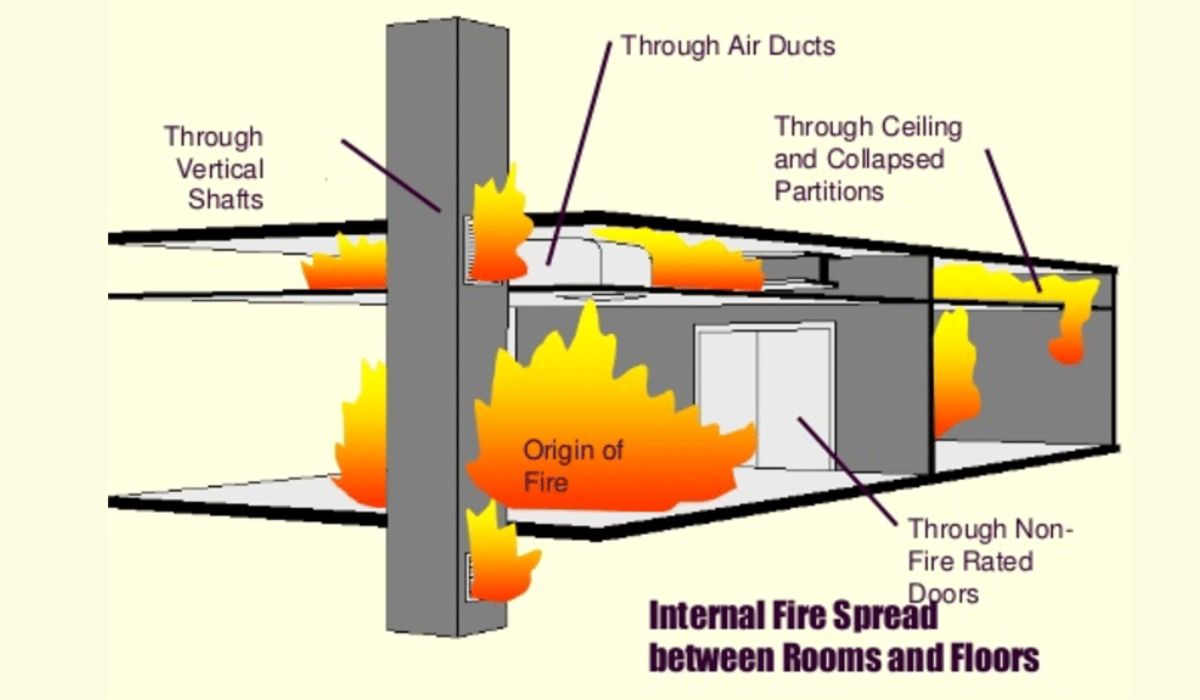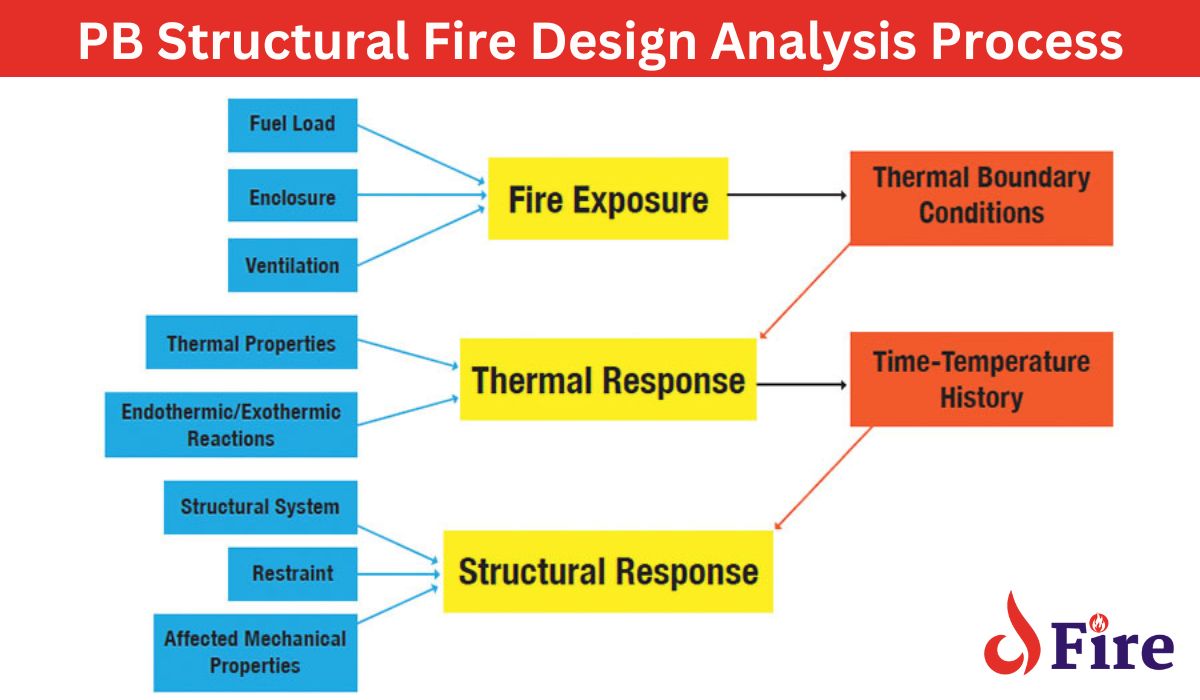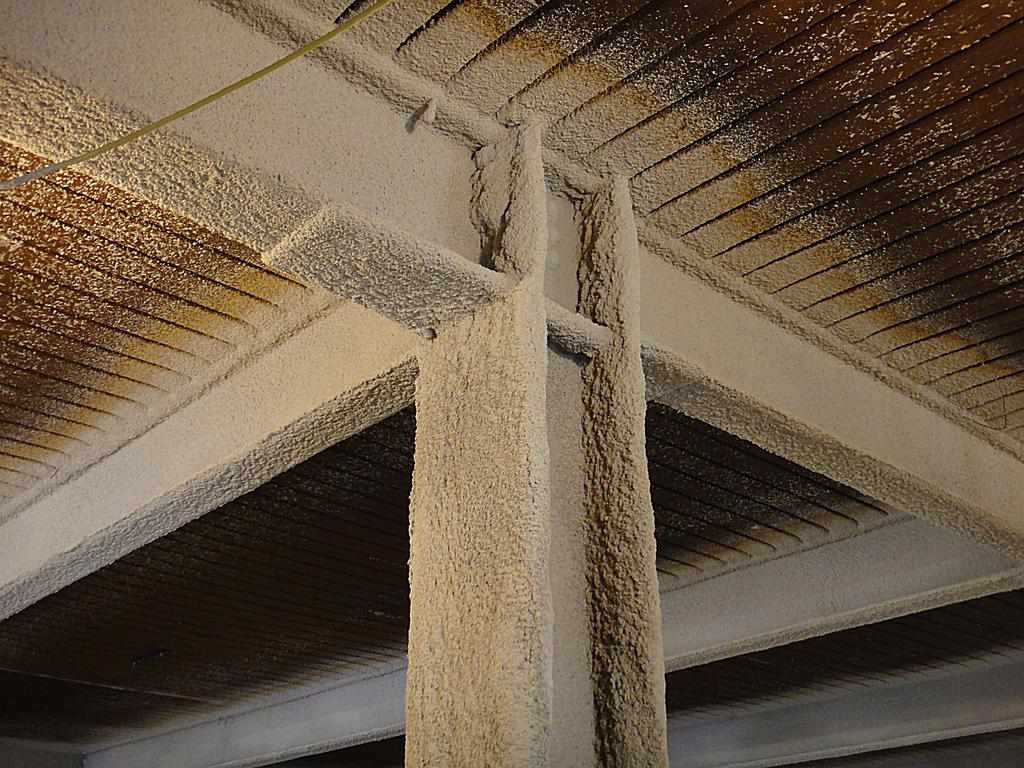Structural steel is a fundamental component of modern buildings, offering strength, durability, and flexibility in construction. However, despite its resilience, structural steel is susceptible to damage in the event of a fire. Ensuring proper fire protection for structural steel is crucial to maintain the integrity and safety of buildings.
In this comprehensive guide, we will delve into the importance of fire protection for structural steel, explore various protection methods, discuss regulations and standards, and address common questions regarding this vital aspect of building safety.
Understanding the Importance of Fire Protection for Structural Steel
Why Structural Steel Requires Fire Protection Measures
Structural steel, although robust, can weaken and lose its load-bearing capacity when exposed to high temperatures during a fire. This vulnerability stems from the fact that steel begins to lose its structural integrity at relatively low temperatures compared to other building materials. Unprotected steel can reach critical temperatures rapidly in a fire, leading to structural failure and potentially catastrophic consequences.
Potential Risks of Fire Damage to Structural Steel
The risks associated with fire damage to structural steel in buildings are manifold. These include:
- Loss of Structural Integrity: Excessive heat weakens steel, compromising the structural stability of the building.
- Collapse Hazard: If structural steel fails during a fire, it can trigger a building collapse, endangering occupants and emergency responders.
- Property Damage: Fire-damaged steel may require extensive repairs or replacement, resulting in significant financial losses.
- Life Safety Concerns: Fire can spread rapidly in buildings with compromised structural steel, posing grave risks to human life.
Methods of Fire Protection for Structural Steel

Passive Fire Protection Techniques
Passive fire protection involves designing and constructing buildings with materials and systems that provide inherent fire resistance. Common passive fire protection methods for structural steel include:
- Fire-Rated Coatings: Intumescent or cementitious coatings applied to steel surfaces provide a protective barrier against heat during a fire.
- Fire-Resistant Insulation: Mineral wool or fire-resistant boards installed around steel members insulate them from high temperatures.
- Encasement: Wrapping steel columns or beams with fire-resistant materials, such as gypsum board or concrete, enhances their fire resistance.
Active Fire Protection Systems
Active fire protection systems are designed to detect and suppress fires swiftly, minimizing their impact on structural steel and building occupants. These systems include:
- Automatic Sprinkler Systems: Sprinkler heads release water upon detecting heat, controlling or extinguishing fires in their early stages.
- Fire Detection and Alarm Systems: Smoke detectors and fire alarms provide early warning of fire incidents, enabling prompt evacuation and intervention.
- Fire Suppression Systems: Specialized systems, such as foam or gas-based suppression systems, target and extinguish fires in specific areas.
Considering Fire Spread & Heat Resistance
In understanding fire protection measures. Two key concepts stand central. Firstly. Heat resistance. Which refers To steel’s ability To withstand high temperatures. Second. Fire spread. Which pivots around The rate at which fire can spread across a structure.
Fire safety hinges on having a good handle on these principles. Ensuring structures can resist high temperatures becomes imperative. Also. Limiting The spread of any potential fires forms a core part of proactive fire safety.
Multiple factors influence these principles. This includes The type. Thickness, & application method of fire retardant used. It also encompasses The design & use of The structure. Understanding these can empower you To make informed fire safety decisions.
Considering Fire Spread & Heat Resistance
In understanding fire protection measures. Two key concepts stand central. Firstly. Heat resistance. Which refers To steel’s ability To withstand high temperatures. Second. Fire spread. Which pivots around The rate at which fire can spread across a structure.
Fire safety hinges on having a good handle on these principles. Ensuring structures can resist high temperatures becomes imperative. Also. Limiting The spread of any potential fires forms a core part of proactive fire safety.
Multiple factors influence these principles. This includes The type. Thickness, & application method of fire retardant used. It also encompasses The design & use of The structure. Understanding these can empower you To make informed fire safety decisions.
Regulations and Standards for Fire Protection in Buildings
Building Codes and Requirements
Building codes and standards mandate specific fire protection measures to safeguard structural steel in buildings. These regulations address factors such as:
- Fire Resistance Ratings: Prescribed fire resistance ratings for structural elements dictate the type and duration of fire protection required.
- Occupancy Classification: Buildings with different occupancy types (e.g., residential, commercial, industrial) may have varying fire protection requirements.
- Fire Barrier Construction: Requirements for fire barriers, partitions, and compartmentation to contain and prevent fire spread within a building.
Compliance with Fire Protection Standards
Compliance with applicable building codes and standards is essential to ensure the effectiveness of fire protection measures. Building owners, architects, and contractors must adhere to:
- National Building Codes: Such as the International Building Code (IBC) in the United States, which establishes minimum requirements for fire protection in buildings.
- Industry Standards: Standards developed by organizations like the National Fire Protection Association (NFPA) provide guidelines for the installation and maintenance of fire protection systems.
Factors to Consider When Choosing Fire Protection Systems

PB Structural Fire Design Analysis Process
Type of Building and Its Usage
The type of building and its intended use influence the selection of fire protection systems. Factors to consider include:
- Occupancy Type: Residential, commercial, industrial, or institutional buildings may require different fire protection strategies based on occupancy loads and activities.
- Building Height and Configuration: Tall buildings or those with complex layouts may necessitate specialized fire protection systems to ensure comprehensive coverage.
Environmental Factors
Environmental conditions, such as climate and location, can impact the performance and durability of fire protection systems. Considerations include:
- Exposure to Weather Elements: Outdoor structures or buildings in regions prone to extreme weather require weather-resistant fire protection solutions.
- Chemical Exposure: Buildings housing hazardous materials may need fire protection systems resistant to chemical corrosion or degradation.
Budget Considerations
Balancing cost-effectiveness with optimal fire protection is essential when selecting systems and materials. Factors affecting budget considerations include:
- Initial Installation Costs: The upfront investment in fire protection systems, including materials, equipment, and labor.
- Long-Term Maintenance Expenses: Ongoing maintenance and inspection costs associated with ensuring the continued effectiveness of fire protection measures.
Regulations Surrounding Structural Steel Fire Protection
Various regulations guide The implementation of fire protection measures. The International Code Council (ICC) maintains a series of codes tailored To fire safety. Strict adhesion encourages The safety & stability of steel structures.
Apart from The ICC. Other local building & safety codes must be complied with. Building safety regulations consider numerous factors. Things like location. Usage of The structure & The fire risk attached influence these.
Noncompliance can entail severe penalties. Therefore. Adherence contributes To reducing such liability risks. Moreover. Compliance ensures The safety & longevity of your steel structure. Benefiting users & investors alike.
The Future of Fire Protection for Steel Structures

Current trends in The construction domain point towards increased technology usage. This includes using automated systems for monitoring & executing fire safety measures. Such advancements can greatly reduce human intervention. Minimizing errors.
Efforts towards creating more environmentally friendly fireproofing methods are also underway. Traditional options may contain harmful elements. A shift towards greener solutions can contribute To a more sustainable building sector.
Innovations might also modify current materials. This could lead To more efficient fireproofing solutions. Robust R&D is pushing The boundaries of what is possible in The realm of fire protection.
Features of Fire Protection for Structural Steel
- Heat resistance
- Durability
- Enhanced structural integrity
- Cost-effectiveness
- Ease of application
- Quick drying times
Investing in Reliable Fire Protection Measures
Investing in quality fire protection measures can prove immensely beneficial. Cost savings from reduced repairs & replacements are probable. Moreover. It adds To The overall lifespan of your building.
Insurance firms view such investments favorably. Potentially leading To lowered premiums. Most importantly. Comprehensive fire protection measures can save lives. Such immeasurable benefits make investing in these measures indispensable.
Hence. Take time To research options. Seek out professionals. Inquire about their recommendations & experience. Make an informed choice for safety & longevity of your steel structure. Remember. Robust fire protection measures often speak To The credibility of your building.
Final Thoughts
Fire protection measures for steel buildings stand as not only important but crucial. Adopting comprehensive fire protection strategies can drastically reduce The risk of fire damage. This subsequently leads To longer lasting. Safer structures.
However. Due diligence during The selection process is crucial. Selecting a fire protection measure which aligns with The unique requirements of your steel structure is key. Standard regulations should also be referred for The sake of safety & compliance.
The construction industry is seeing a shift towards increased usage of greener. User-friendly fire protection solutions. These trends are influencing standard practices. Leading To potentially safer & more efficient fireproofing strategies. Staying ahead of these trends is a smart way To ensure that your steel structure is as safe as it can be.
Fire Protection Measures & Structural Steel: A Critical Analysis
Fire protection forms a significant aspect in designing buildings. Understanding its importance. Specifically in relation To structural steel. Is highly crucial. Buildings are built primarily with structural steel because of its strength & design flexibility. However. Steel’s resilience gets reduced significantly when exposed To high temperatures.
This reduction in strength brings us To one crucial aspect: fire protection for structural steel. An industry standard. This process protects steel structures from high temperatures. Delaying The heat effect on The steel. Thus. It prevents The potential collapse of The steel structure. Leading To catastrophic failures.
Talking about my personal experience. I worked on a project that involved constructing a multistory building. That experience opened my eyes To The importance of fire protection measures for structural steel. We relied heavily on The quality of The steel but also The fire protection methods employed. The responsibility felt enormous. But it was also a significant learning experience.
Various Methods of Steel Fire Protection
Different methods can protect steel structures from fire damage. These methods include intumescent coatings. Board protection, & sprayed fir resistive materials. Each method has its advantages. Posing unique challenges & suitability. Depending on The scenario.
Intumescent coatings are paints that. When exposed To heat. Expand. Creating an insulating barrier around The steel. Board protection involves The attachment of fir resistive boards around The steel. Providing a layer of protection. Sprayed fir resistive materials. On The other hand. Are spray applied materials that adhere To The steel & protect it. An essential aspect of these fire protection methods is how different they are. Suitable for various scenarios & building types.
You can dive deeper into fire protection methods by reading this guide or this detailed NIST publication.
Key Benefits To Effective Fire Protection of Structural Steel
Fire protection does more than simply protect steel from heat. Done effectively. It prevents more drastic consequences. Such as The collapse of buildings. Loss of property, & even loss of lives.
When steel structures get appropriately protected from fire. They retain structural integrity for longer. Allowing more time for evacuation. This extension of time might save many lives in a fire event. It also allows more time for fire services To combat & extinguish The fire. Potentially saving The building & property inside.
Equally. Effective fire protection limits structural damage. Minimizing reconstruction costs postfire. In comparison. A scenario where fire protection is not applied. The costs would likely be significantly higher due To extensive damage.
Common Questions About Fire Protection for Structural Steel
What are the main reasons for needing fire protection for structural steel in buildings?
Structural steel loses strength when exposed to high temperatures, increasing the risk of building collapse during a fire.
What are the typical fire protection methods used for structural steel?
Common methods include fire-resistant coatings, insulation, encasement, automatic sprinkler systems, and fire detection and alarm systems.
How do building codes and regulations affect fire protection requirements?
Building codes mandate specific fire resistance ratings and fire protection measures based on factors such as occupancy type, building height, and configuration.
How can one determine the appropriate fire protection system for a specific building?
Consultation with fire protection engineers and compliance with relevant building codes and standards are crucial in determining suitable fire protection measures.
Are there any environmental concerns related to fire protection systems for structural steel?
Environmental factors, such as climate and chemical exposure, may influence the selection and performance of fire protection systems.
What are the cost implications of implementing fire protection measures for structural steel?
The cost of fire protection measures depends on factors such as the type of system, building size, and maintenance requirements.
How often should fire protection systems for structural steel be inspected and maintained?
Regular inspections and maintenance are essential to ensure the continued effectiveness of fire protection systems, typically conducted annually or as per manufacturer recommendations.
Can structural steel be retrofitted with fire protection systems after construction?
Yes, structural steel can be retrofitted with fire protection systems, although it may involve additional costs and logistical challenges.
Are there any alternatives to traditional fire protection methods for structural steel?
Emerging technologies, such as advanced coatings and innovative materials, offer alternatives to traditional fire protection methods for structural steel.
What role do insurance companies play in fire protection measures for structural steel?
Insurance companies may offer incentives or discounts for buildings equipped with effective fire protection systems, incentivizing compliance with safety standards.
Conclusion: Prioritizing Fire Protection for Structural Steel
Ensuring adequate fire protection for structural steel in buildings is paramount for safeguarding lives, property, and investments. By understanding the importance of fire protection measures, complying with regulations, and implementing effective systems, stakeholders can mitigate the risks posed by fire incidents and enhance overall building safety and resilience. Through proactive planning and investment in robust fire protection solutions, buildings can withstand the challenges posed by fires and continue to serve their occupants and communities for generations to come.

I’m Abdus Sobur, a highly skilled and professional Fire Safety Officer with a passion for safeguarding lives and property. Over the course of my career, I’ve conducted numerous successful fire safety audits, earning a reputation for excellence in ensuring public safety.
In addition to my role as a Fire Safety Officer, I’m also dedicated to raising awareness about the importance of fire safety. Through my blog, I share insights into the functions of different fire safety equipment, aiming to empower individuals with the knowledge they need to protect themselves and their communities.
I’m driven by a deep commitment to promoting fire safety awareness and preventing fire-related incidents.

